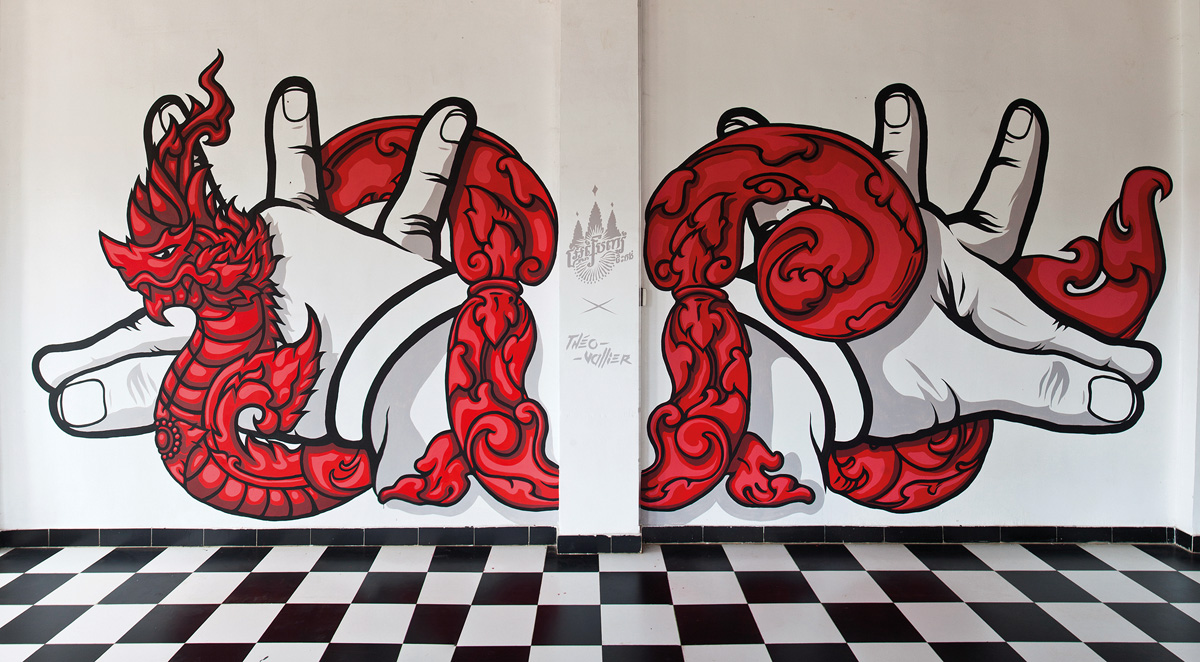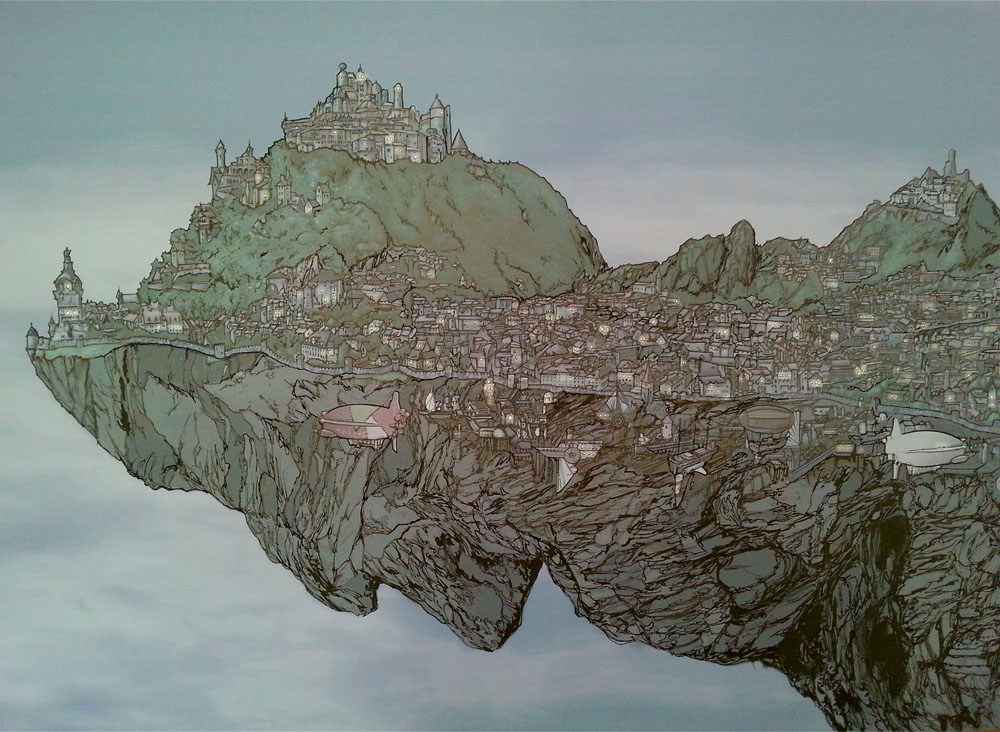Remember when the internet was first introduced? Speculation was about on par with excitement: in one corner were the skeptics, widely dismissing it as an impractical fad, in the other were the enthusiasts, championing the idea of an unregulated information-sharing network. Fast forward 50 years to an uncannily analogous scenario, the scary-shiny new technology in question being cryptocurrency. There are now several hundred of these conceptual currencies circulating the globe, two of which are flitting between smartphones and computers as we speak: bitcoin, and its lesser known relative, BlackCoin.
Cryptocurrency is (in very basic terms) an internet-based digital tender – a medium of exchange that is decentralised and theoretically anonymous due to encrypted transactions. The currencies can be exchanged for regular money, though their dollar value can fluctuate significantly [sometimes by several hundred dollars overnight]. The most popular of these currencies is bitcoin, which works using a “proof of work” system (aka “mining”), whereby computer processing is used to solve equations and earn bitcoin as a result.
Entrepreneur Ki Chong Tran incited a wave of media attention in March 2014 when he submitted a proposal to the Bitcoin Foundation requesting a grant to allow the implementation of a steady market in Phnom Penh, including two bitcoin ATMs. The proposal was turned down, Tran believes, because “It was a very unique proposal and no one’s ever done something like that before.” At the time, the proposal sparked a comment from the National Bank of Cambodia which stated that it would not consider bitcoin as legal tender within the country.
At about the same time, a more dramatic blow to the bitcoin revolution came in the form of the evaporation of Japanese bitcoin exchange Mt. Gox, following a large-scale hacking incident, which resulted in the loss of over $460 million. Unsurprisingly, the event incited a worldwide ripple of fear over the security and regulation of bitcoin technologies.
None of this was enough to discourage local Steve Merger, however, who last December opened Coin Café, Phnom Penh’s first food and beverage venue to utilise payment via bitcoin. With his business on a steady increase (now hosting regular enthusiast meet-ups), as well as a newly formed website exporting local goods in exchange for bitcoin, Merger attests that the security of the currency is not the problem, rather, the use of a third party that deals with the currency.
“Bitcoin itself cannot be hacked,” Merger insists. “The companies who deal in bitcoin can be though, and that’s why if you use someone like Mt. Gox you’re introducing the third party risk that bitcoin was created to circumvent. Nobody even knows –the [Mt. Gox CEO] could have stolen these bitcoins, or he could have been hacked. Mt. Gox had a history of just being totally inept. I don’t know how they survived at all. Their service was garbage and their reputation was really bad.”
The more immediate issue we really need to be considering, Merger believes, is how the risks and benefits involved with using bitcoin can be weighed against those posed by existing financial institutions.
“Look at HSBC, Goldman Sachs and Bear Stearns – all these companies are regulated, and yet all failed and lots of people lost lots of money. And those were high-end investors – very sophisticated people. Everyone is screaming for regulation with bitcoin, but what difference does it make?” Merger remarks. “Now there’s something called fractional recession banking. It’s totally illegal and you would never think this kind of thing would be allowed to happen. But the banking system is so corrupt right now and nobody cares, because the system is insured by the government – if you lose your deposits, the government will just print more money to bail out the banks. This can’t happen with bitcoin because there’s only a limited amount that will ever be produced.”
Having said that, Merger agrees with the NBC’s decision to refuse recognition of bitcoin as legal tender within Cambodia – at least, for now. “In Cambodia, bitcoin is such a niche. This is the least of their concerns because there’s no market for it yet. So they’re right to ignore it for the moment.” Merger believes, however, that once bitcoin takes off, the NBC will likely revoke their decision. “Once they see its usefulness and the applicability of it to Cambodia then I think they’ll embrace it.”
According to Merger, Cambodia is, in fact, an ideal setting for the implementation of bitcoin. “There are a lot of uses for bitcoin here,” Merger says. “Probably the number one is remittances – people who live in foreign countries who send money back home – because there are no transaction fees with bitcoin. The biggest use for bitcoin in the world now is for donations and charity. You can pay someone 50 cents for free, which you can’t really do with other payment methods. I’d really like to see that take off in Cambodia, because there are so many charities here. The problem is that it’s just not user friendly yet. But it’s growing, the industry is young. Once the government learns more about it and it evolves a bit more, I truly believe that Cambodia is going to be really excited about it. It’s the decentralised peer-to-peer revolution.”
Josh Bouw, International Director of BlackCoin, Cambodia’s only other widely circulating cryptocurrency, maintains a similar outlook, considering bitcoin’s additional utilisation at a personal level.
“Many of us have to travel a lot with work. When I go to conferences overseas, I never bring local currency into another country,” Bouw says. “I take my riel and USD, I buy bitcoin, then I go the foreign country and exchange it for the local currency. Because otherwise I am paying something ridiculous, like 12%, just to change my money.”
For Bouw, however, BlackCoin is the cryptocurrency of choice. Since its conception almost one year ago, Josh has represented and traded with BlackCoin as his preferred alternative tender due to the qualities it possesses, which bitcoin lacks.
“I didn’t think bitcoin would last because of how the technology was set up – the economics just didn’t make sense.” Josh explains. “The method that bitcoin uses is “proof of work,” or mining, which earns bitcoin. It fluctuates dramatically because of this. It’s also grown to the point where people have learned how to exploit mining– there are computers that have been created specifically to mine bitcoin at a more efficient level. BlackCoin doesn’t have these problems because it doesn’t use mining, but ‘proof of stake’. Therefore, it’s been pretty stable since it began almost a year ago. We also hope to implement compound interest with BlackCoin, so the longer you have your coins open on the network, the more value you’ll get back.”
Early last year, BlackCoin announced that they had secured ATM terminals which would dispense and exchange cryptocurrencies within Phnom Penh, provisionally located at Central Market and Tuol Tompuong. The plan has since been deferred until demand is high enough to warrant costs involved.
“Those were supposed to come, but when we looked into it, the rental costs were quite high and the user base would have had to have been much higher to validate their use. It would be awesome to have the ATMs here, but right now it’s better to do it person-to-person until the user base builds up. Right now, people can call me and I’ll meet with them to trade, but when it gets to the point where that becomes too much, having an automated system would be a Godsend.”
The cryptocurrency conversation, it seems, is rooted in speculation and framed within the future tense. Both Merger and Bouw agree that, while it is impossible to say exactly how much sway cryptocurrencies like bitcoin and BlackCoin will have over the Cambodian market, they will inevitably exist, though in what capacity is yet to be revealed.
“There’s a bit of a lull now, but the longterm trend is positive,” Merger states. “It’s a revolutionary technology. It’s now just a matter of how we’re going to utilise that technology. We’re just sort of waiting out to see what happens next. The potential for bitcoin is there and I think there’s a lot more bitcoin user activity in this country than I even realise.”
Bouw agrees, “Cryptocurrency is the future of the economy. It might not be bitcoin, but it will be something similar to it – a currency system that will be improved and regulated. There are a lot of ways it could go, but either way I think cryptocurrency will always be here.”
Smiling, Bouw adds, “I know people have made quite a bit of money off the work we’re doing. I’ve been sent about $15,000 out of the blue and thought, ‘What the hell is this?’ ‘Who did this and why?’ There was just nothing said about it. I’m still wondering who did it, but I’m pretty sure it was someone who was pretty grateful for what they got through buying and selling with BlackCoin.”






